Enhanced TDS
Identification & Functionality
- Chemical Family
- Fillers Included
- RTU Product Type
- Technologies
- Product Families
Features & Benefits
- Ready-to-Use Product Features
- Features and Benefits
- Good mechanical and electrical end properties
- Very high thermal endurance properties Class H according to IEC 60085.
- High thermal stability, flexibilized, low viscosity system.
Applications & Uses
- Composites Processing Methods
- Cure Method
- Product End Uses
- Markets
- Applications
- Processing Information
The effective pot-life is about 1 days at temperature below 25°C. Conventional batch mixers should be cleaned once a week or at the end of work. For longer interruptions of work, the pipes of the mixing and metering installations have to be clooled and cleaned to prevent sedimentation and/or undesired viscosity increase. Interruptions over a weekend (approx. 48h) without cleaning are possible if the pipes are cooled at temperature below 18°C. In case to use mixtures with high reactivity, we recommend to clean daily with the flexibilizer DY 040 CI. Viscosity increase and gel time at various temperatures, refer to Figs: 4
Mold temperature
Conventional vacuum casting 80 - 100°C
Demolding times (depending on mold temperature and casting volume)
Conventional vacuum casting 4 - 8 h
Cure conditions (minimal postcure)
Conventional vacuum casting 4h at 80°C + 10h at 130°C or and 4h at 80°C + 6h at 140°C
Castings with big volume (exothermic reaction, internal mechanical stresses) or encapsulations of heat sensitive active parts could be cured at appr. 80°C. To determine whether crosslinking has been carried to completion and the final proper-ties are optimal, it is necessary to carry out relevant measurements on the actual object or to measure the glass transition temperature. Different gel and postcuring cycles in the manufacturing process could influence the crosslinking and the glass transition temperature respectively.Processing Viscosities
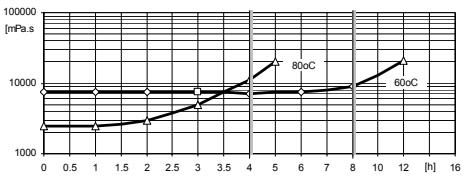
Fig.4.1: Viscosity increase at 60 and 80°C (measurements with Rheomat 115) (Shear rate D = 10 S⁻¹)
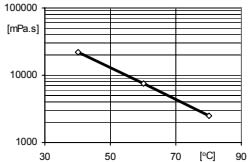
Fig.4.2: Initial viscosity in function of temperature (measurements with Rheomat 115, D=10S⁻¹)
Gelation-/Cure Times
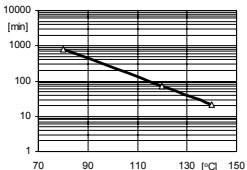
Fig.4.4: Geltime measured in function of temperature (measurement with Gelnorm Instrument)
Mechanical and Physical Properties
Key Value Unit Test Method Condition Tensile strength 75 - 85 N/mm² ISO R 527: 1993 Cured for 6h at 80°C + 10h at 130°C
Elongation at break 1.0 - 1.2 % ISO R 527 Cured for 6h at 80°C + 10h at 130°C
E modulus from tensile test 11,500 - 12,500 N/mm² ISO R 527 Cured for 6h at 80°C + 10h at 130°C
Flexural strength 120 - 130 MPa ISO 178: 2001 Cured for 6h at 80°C + 10h at 130°C
Surface strain 1.0 - 1.5 % ISO 178: 2001 Cured for 6h at 80°C + 10h at 130°C
E modulus 12,000 - 14,000 MPa ISO 178: 2001 Cured for 6h at 80°C + 10h at 130°C
Critical stress intensity factor (KIC) 2.7 - 2.9 MPa·m¹/² PM 216-1989 Cured for 6h at 80°C + 10h at 130°C
Specific energy at break (GIC) 580 - 630 J/m² PM 216-1989 Cured for 6h at 80°C + 10h at 130°C
Glass transition temperature (DSC) 60 - 80 °C ISO 11357-2: 1999 Cured for 6h at 80°C + 10h at 130°C
Coefficient of linear thermal expansion (Mean value below Tg) 34 - 40 ppm/K ISO 11359: 1999 Cured for 6h at 80°C + 10h at 130°C
Thermal endurance profile (TEP) Fig. 7 DIN/IEC 60216 Cured for 6h at 80°C + 10h at 130°C
Temperature index (TI): flexural strength (20,000h/10,000h) 180 / 197 °C IEC 60085 Cured for 6h at 80°C + 10h at 130°C
Thermal ageing class (20,000h) H IEC 60085 Cured for 6h at 80°C + 10h at 130°C
Water absorption (10 days at 23°C) 0.05 - 0.10 % by wt ISO 62 Cured for 6h at 80°C + 10h at 130°C
Water absorption (60 minutes at 100°C) 0.10 - 0.20 % by wt ISO 62 Cured for 6h at 80°C + 10h at 130°C
Density (Filler load: 66% by weight) 1.8 - 1.9 g/cm³ ISO 1183 Cured for 6h at 80°C + 10h at 130°C
Electrical Properties
Key Value Unit Test Method Condition Breakdown strength (IEC 60243-1) 18 - 22 kV/mm IEC 60243-1 Cured for 6h at 80°C + 10h at 130°C
HV arc resistance (ASTM D 495) 185 - 195 sec ASTM D 495 Cured for 6h at 80°C + 10h at 130°C
Tracking resistance (IEC 60112) CTI > 600 - 0.0 IEC 60112 Cured for 6h at 80°C + 10h at 130°C
Tracking resistance (with test solution B) CTI > 600M - 0.0
IEC 60112 Cured for 6h at 80°C + 10h at 130°C
Electrolytic corrosion (DIN 53489) A-1 Grade DIN 53489 Cured for 6h at 80°C + 10h at 130°C
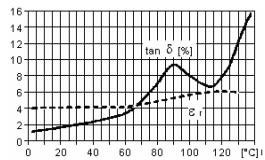
Fig.6.1: Loss factor (tan δ) and dielectric constant (εr) as a function of temperature (measurement frequency: 50 Hz) (IEC 250 / DIN 53483)
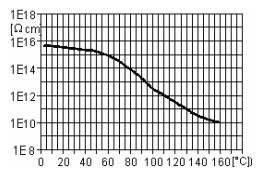
Fig.6.2: Volume resistivity (ρ) as a function of temperature (measurement voltage: 1000 V) (IEC 93 / DIN 53482)
Thermal Endurance
Investigated property Flexural strength (ISO 178)
Results20000h 180°C
10000h 197°C
Selected end 50% of initial valueInvestigated property : Flexural strength (ISO 178)
Selected end point : 50 % of initial value (144.3 MPa)
TI(HIC) 180 (17) Statistical test variables : CHP=3.03 Statistical test variables : F=1.5 Lower 95% confidence curve TC: 179°C 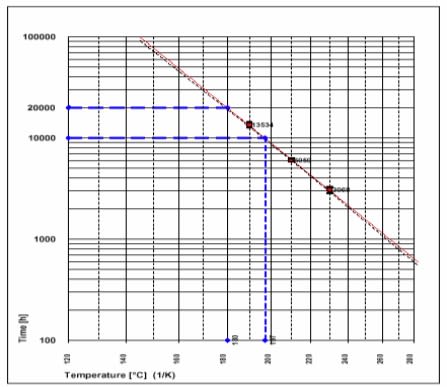
Fig. 7 With the high temperature index given above the materials qualify for use in systems with a thermal class of 180 C. This makes it suitable for designing and producing of class H cast resin distribution transformers.
- Application Information
Dry-type distribution transformers, glass fiber reinforced
- System Preparation
General instructions for preparing liquid resin systems.
- Long pot life is desirable in the processing of any ARALDITE casting resin system. Mix all of the components together very thoroughly at room temperature or slightly above and under vacuum. Intensive wetting of the filler is extremely important. Proper mixing will result in:
- better flow properties and reduced tendency to shrinkage.
- Lower internal stresses and therefore improved mechanical properties on object
- Improved partial discharge behaviour in high voltage applications.
- For the mixing of medium to high viscous Araldite casting resin systems and for mixing at lower temperatures, we recommend special thin film degassing mixers that may produce additional self-heating of 10-15 K as a result of friction
- . For low viscous Araldite casting resin systems, conventional anchor mixers are usually sufficient. In larger plants, two premixers are used to mix the individual components (Araldite and Aradur) with the respective quantities of fillers and additives under vacuum. Metering pumps then feed these premixes to the final mixer or a continuous mixer. The individual premixes can be stored at elevated temperature (about 60°C) for up to about 1 week, de-pending on formulation. Intermittent agitation during storage is advisable to prevent filler sedimentation.
- Mixing time can vary from 0.5 to 3 hours, depending on mixing temperature, quantity, mixing equipment and the particular application. The required vacuum is 0.5 to 8 mbar. The vapour pressure of the individual components should be taken into account. In the case of dielectrically highly stressed parts, we recommend checking the quality consistency and predrying of the filler. Their moisture content should be max. 0.2%.
Properties
- Physical Form
- Notes
- Aradur® HY 5980 CI tends to crystallise especially at low storage temperatures. These crystallised material can be dissolved by heating to 40 - 80°C.
- Aradur® HY 5980 CI is sensitive to humidity, partly emptied containers should be closed tightly immediately after use.
Storage & Handling
- Storage Conditions
Store the components at 18-25°C, in tightly sealed and dry original containers. Under these conditions, the shelf life will correspond to the expiry date stated on the label. Product specific advise regarding storage can be found on product label. After this date, the product may be processed only following reanalysis. Partly emptied containers should be closed tightly immediately after use. For information on waste disposal and hazardous products of decomposition in the event of fire.
Other
- Application Information
Value Units Test Method / Conditions Mix Ratio 0.002 %(W) %(W) Accelerator : Resin Mix Ratio 0.13 %(W) %(W) Flexibilizer : Resin Mix Ratio 0.95 %(W) %(W) Hardener : Resin
